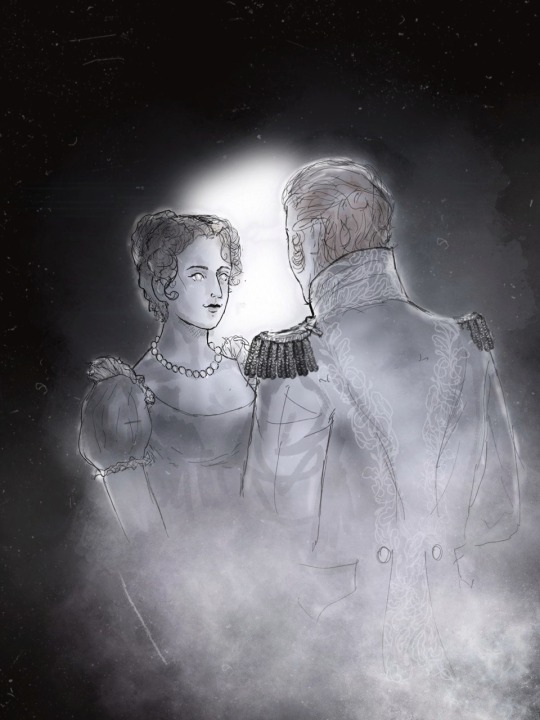#aglae ney
Text

Happy birthday to Aglae Ney - the bravest of brave women!
#history#french history#history art#napoleonic#aglae ney#michel ney#aglae and michel ney#napoleon#napoleon bonaparte
95 notes
·
View notes
Text

it's Ney's Birthday!!!🎂 but this piece is for the one and only @literaldump-ko for an art trade^^💗 ilu bestie! i hope you like it 💖
#michel ney#aglae ney#napoleonic era#napoleon's marshals#napoleon#ahh i hope you like it💗#love u🥺#im just gonna pretend this is supposed to be minimalistic :D#yayayayayaay ney ney ney <3#my art
48 notes
·
View notes
Text
Happy birthday to my dear friend and co-author @pobodleru

42 notes
·
View notes
Text
Torino: la “credenza” degli Este in mostra alla Reggia Venaria.

Torino: la “credenza” degli Este in mostra alla Reggia Venaria.
Siedono idealmente anche i sovrani di Modena al "pranzo dei re" allestito a Venaria Reale, nell'omonima reggia, in provincia di Torino. Fino al 28 gennaio, nell'ambito della mostra "Sovrani a tavola. Pranzi imbanditi nelle corti italiane", sono in esposizione parte dei sontuosi servizi appartenuti alla "credenza" degli Este, prestati per l'occasione dal Museo civico di Modena. Un vasetto, una zuppiera e un vassoio in maiolica, insieme a un raffinato calice di cristallo, arricchiscono, infatti, gli oltre duecento manufatti del percorso museale che racconta le tavole regie nella loro rappresentazione simbolica e nei risvolti quotidiani.
Il vasetto e la zuppiera, decorate con lo stemma nuziale, appartengono a un servizio da tavola commissionato alla bottega di Virgiliotto Calamelli, in occasione delle seconde nozze di Alfonso II d'Este, celebrate nel 1565 con Barbara d'Austria, una delle figlie di Ferdinando re d'Ungheria.
Dello stesso periodo è anche il vassoio ovale che reca al centro lo stemma della dinastia estense.
Per la realizzazione dei tre manufatti, sormontati dalla corona ducale e dal collare del Toson d'oro, tra i più antichi e prestigiosi ordini cavallereschi, si ricorse allo stile dell'epoca, quello dei "bianchi di Faenza". Smalto bianco di grosso spessore e decorazioni essenziali caratterizzano la lavorazione di queste pregiate maioliche create, appunto, dai maestri faentini, protagonisti, a partire dalla seconda metà del Cinquecento, di importanti commissioni provenienti da tutta Europa.
Tra le opere in prestito, tutte esposte solitamente nella Sala delle Ceramiche del Museo civico, c'è anche una manifattura boema del 1720; si tratta di un raffinato calice di cristallo che appartenne, come testimonia lo stemma, alla casata estense, e più precisamente a Francesco III. È probabile, infatti, che il calice venne realizzato in occasione delle nozze del sovrano con Carlotta Aglae d'Orléans.
Inaugurata il 28 settembre, la mostra "Sovrani a tavola. Pranzi imbanditi nelle corti italiane" rimarrà allestita fino al 28 gennaio.
L'esposizione, ideata dal Consorzio residenze reali sabaude del Piemonte, conclude la programmazione 2023 dedicata al tema del cibo. Attraverso l'esibizione di dipinti, arredi da tavola, servizi di porcellana e d'argento, provenienti dalle principali corti italiane, la mostra racconta l'inedita e curiosa storia dei pranzi di papi, principi e re. La progettazione del percorso è stata possibile grazie alla collaborazione con le più importanti ex residenze reali d'Italia, dal Quirinale alle regge di Capodimonte e di Caserta, dal Palazzo Reale di Milano a Palazzo Pitti, e l'apporto di opere provenienti da diversi musei italiani ed europei.
Il percorso espositivo, curato nel suo allestimento da Andrea Merlotti, storico e direttore del Centro studi del Consorzio delle residenze reali sabaude, insieme alle storiche dell'arte Silvia Ghisotti e Clara Goria, rispettivamente capo conservatore emerito e conservatrice della Reggia di Venaria, si articola negli spazi del secondo piano delle Sale delle Arti della residenza sabauda (per informazioni e prenotazioni: www.lavenaria.it; [email protected])....
#notizie #news #breakingnews #cronaca #politica #eventi #sport #moda
Read the full article
0 notes
Text
Ney’s Family, After: “Here’s the Catering Bill for the Executioners, Madame Ney”
This is my latest translation of the French Senat’s file about Marshal Ney, followed by my comments.:
Marshal Ney's family was held responsible for all trial expenses. These included items such as travel expenses for those witnesses who had come from far away. Nothing was spared Ney's widow. The Sénat has within its archives a folio of invoices relating to the trial.
La Maréchale Ney, who obtained no favours from Louis XVIII, nevertheless was granted a pension of twenty-five thousand francs by Louis-Philippe. She was not in attendance on 7 December 1853 at the unveiling of Ney's statue. She died in July 1854, thirty-nine years after the Marshal, without having been granted a review of the 1815 trial.
Marshal Ney and his wife had four sons: Joseph-Napoléon, called Léon (1803-1857), and Michel Louis Félix, called Aloys (1804-1854), the only two who had children; Eugène (1806-1845); and Napoléon Henri Edgar (1812-1882). They all served in the army or in the diplomatic corps, and all four of them campaigned for a revision of their father's trial, for his reinstatement, and for the promotion of his memory.
The eldest, Joseph-Napoleon, second Prince of Moskowa, began his career as an officer in the service of Sweden, was made a Peer of France in 1831, elected to Parliament in 1848, and raised to the rank of Brigadier General in 1851. He married and had a daughter and a son.
The second son, known as Aloys, the second Duke of Elchingen, also served in Sweden from 1824 to 1830, achieved the rank of Colonel in 1844, was elected Member of Parliament in 1846, and raised to the rank of Brigadier General in 1851. He was married and had a son and two daughters.
The third son, Eugène, was a diplomat (embassy attaché). Seriously ill, he died in 1845, at the age of thirty-nine, unmarried and childless.
The fourth and last son, Napoleon-Henri Edgar, the third Prince of the Moskowa, was a second lieutenant in 1832, appointed Colonel, aide-de-camp to Napoleon III after the coup d'état of 2 December, Brigadier General in 1856 and Major General in 1863. Late in life, in 1869, he married the Comtesse de La Bédoyère, daughter of General de La Bédoyère, one of the first to rally to Napoleon in 1815, who was shot for it on the plain of Grenelle on 19 August 1815. They were childless.
The original text can be found here:
https://www.senat.fr/evenement/archives/D26/execution_et_rehabilitations/la_descendance_ney.html
Bernadotte invited Ney’s sons to live in Sweden. That the eldest two served in its army is not surprising, as a military career might have been impossible for them in France until the advent of Louis-Philippe. Bernadotte had been Ney’s friend, as well as his sponsor during the pre-Napoleonic 1790s.
My trusty 1949 Dictionnaire encyclopedique Larousse mentions Ney’s eldest son mostly as a... composer.
That the youngest son, Edgar, became the third Prince de la Moskova, would seem to indicate that both his nephews pre-deceased him; otherwise, one of them would have inherited the title. I assume therefore that the title of Prince de la Moskova became extinct with Edgar’s death. He remained childless, of course, considering that both he and his bride were in their fifties when they married.
Here can be found extracts from the book of expenses relating to Ney’s trial:
https://www.senat.fr/evenement/archives/D26/ney/extraits_de_ce_recueil.html
Expenses included items such as new uniforms for Ney’s guards; locksmithing, carpentry and furniture for his cell; and catering the Senator’s meals. Here were meals where no one drank to the host’s health.
#michel ney#aglae ney#marshal ney's children#jean-baptiste bernadotte#napoleon's marshals#napoleonic history
20 notes
·
View notes
Text
Hey Y’all,
I got a wild one. This art is gonna get a little more exciting, because I came across an old post about Eugene’s and Marshal Ney’s arranged marriages, thank you @josefavomjaaga. I had a silly idea about making a cover image of a title song featuring, Michel Ney, Eugene and their S/O’s getting all romantic and energetic with one another, despite the irony of the situation. Finding the love within the marriage.
I was listening to a song called “Mujhse Shaadi Karogi” which means “Will you marry me?” , which is the title song of the movie. The featured actors are Salman Khan, Akshay Kumar, and Prianka Chopra.
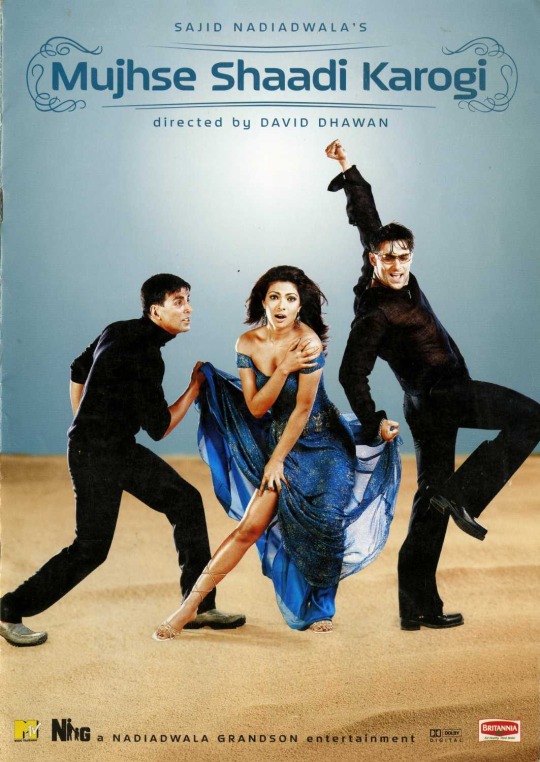
So why not do that? I liked Priyanka’s pose so much. Like she’s helpless that two men are fighting for her. So in this case, Eugene is not fighting for Algae Auguie, but he’s just being a tease for shits and giggles. Since he’s been a player at some point in his life. I added a fourth person to this image. Augusta, timid as hell, is joining the group nonetheless.
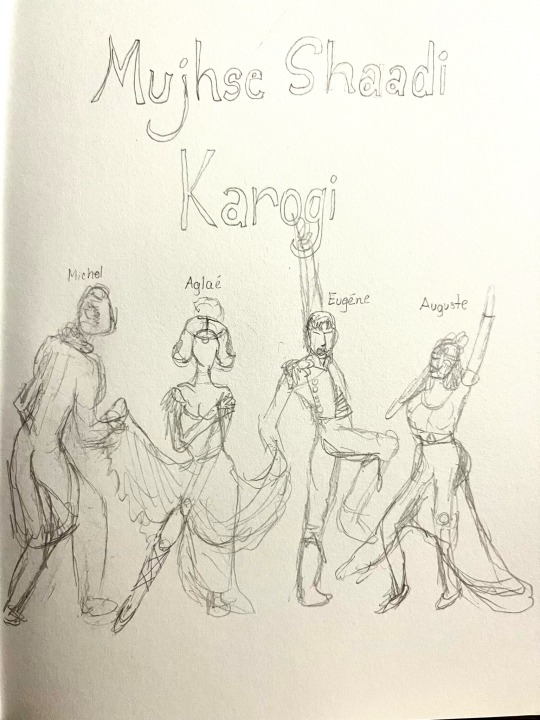
Omgggg 👉🏽👈🏽 😬 this mess of graphite.
#napoleon#art#eugène de beauharnais#marshal ney#princess auguste of bavaria#bavarian cream donuts#aglae ney#historical art#napoleonic
2 notes
·
View notes
Text
What Happened to Michel Ney?
So maybe you don't want to read the book, let's talk about this crazy situation in Napoleonic history. I've gotten a few inquries through the years on here that occasionally bring up P.S. Ney and the possibility that it could have been Marshal Ney. So let's delve a bit.
This whole event is like, to quote Churchill, a mystery wrapped inside a riddle, wrapped inside an engima.
Let's not get too bogged down in the life of Michel Ney. Most will have a working knowledge of the man. He was the last man out of Russia. He lead out the rear guard from Russia, encountering hellish conditions, Cossack attacks and every other type of FUBAR event that he could. He helped with Napoleon's first abdication and then famously said he would bring Napoleon back in an iron cage when he escaped from Elba (spoiler alert: he didn't). He fought at Waterloo, though by this time his relationship with Napoleon had grown colder. He practically went nuts on the Waterloo battlefield, fighting until the bloody end and until his sword had broken in two. Still he carried on, one of the last to leave the battlefield.
He was later arrested, tried for treason, found guilty and shot.
Other things to know in order to piece Michel Ney with P.S. Ney, would be that Ney was gruff in manner, but kind-hearted. Had a "plain way" of speaking. Shied away from notoriety, money and promotions. Married to Aglae (whom he called Louise) with whom he shared four sons. It is known he spoke both French and German and apparently a bit of English as well. He played the flute.
Trial of Ney:
Ney's trial was a bit of a mess and to abbreviate it down, let's say that he cooperated, gave answers in his interrogations, and his lawyers tried to argue that he (Ney) was protected by Article 2 of a treaty that was drawn up after Waterloo and when that didn't work, argued that Ney wasn't beholden to French law, because he really wasn't French but German, because of the part of France he hailed from. This did not sit well with Ney, who shouted out at the trial that was French and would die French. He also gave a different and incorrect(?) birthdate at the start and in a strange twist told his lawyers to stand down in the middle of the trial.
Ney was found guilty, something Ney seemed to know was going to be the conclusion, and his death was voted on in the House of Peers. Strangely, most of the men who voted on it, then immediately went to Richelieu and let it be known that even though they voted for his death, they didn't want to see the sentence carried out. This leads to people from Richelieu and maybe even Wellington seeing if the sentence could be commuted. The King had no interest in doing so.
During his trial, Ney was jailed first at the Concergerie and then the Luxembourg, back to the Conceergerie, back to the Luxembourg where he had a huge security detail surrounding him at all times. The government had heard word of the various plots out there hoping to rescue Ney and became paranoid to keep him jailed.
Execution:
Instructions were sent on how the execution was to take place, and in a change of plans, Ney would be executed outside the Luxembourg and not in a military ground where executions usually took place. The deceased was to be shot, then lie there for those to see for a quarter of an hour at least. Ney met his fate calmly when the news was read to him and was driven out a few feet to the firing squad. Here eyewitness accounts vary on what was said and how he died. He was to be blindfolded and put on his knees, something he declined to do. Instead, he faced the squad, upright, hand on his heart, proclaiming his innocence and saying to "aim high". Shots were fired, Ney dropped face first and a pool of blood was on the ground under him.
Ney was dead. Or was he?
P.S. Ney Reporting:
In the United States, a man who roughly fit the description of Michel Ney appeared in the Alabama, North Carolina, South Carolina, Virginia area as a school teacher. He had reddish hair, balding. He was a plain spoken man but kind hearted and imposing. He said he was a French refugee and had served under Napoleon. He wasn't prone to drinking, but when he did and took too much, he let it slip that he was indeed the one and only Marshal Ney who had not died, but escaped. Who helped him? He didn't really say but did mention to a few people Wellington. Others heard the Freemasons, who Ney was a member of, did the work.
Peter Stuart Ney never spoke of his father but did often speak of his mother who he said was Scottish. He said his wife and children were in France and he hoped to return to them one day. He claimed his wife was close to Josephine and Hortense (this is true). He said he had four sons, never spoke of daughters. Others said he said he had two daughters and a son. What they all agreed on was that this P.S. Ney was the best teacher they ever had. He was kind, fair, tough but just. He was the best swordsmen they had ever seen. He was an accomplished horsemen, a good marksmen.
He taught language: English, Latin, Greek. Was reluctant to speak French but could. Also spoke a bit of Polish and Hebrew (?). Some said he had a Scottish brogue, others said a German brogue, others said it just sounded foreign.
He also played the flute. But was also a poet and artist. Drew a wonderful portrait of Napoleon. He was a fierce Bonapartist. When he heard of Napoleon's death, he fainted and later slit his throat in a suicide attempt. It failed and he was doctored. Later when he found out Reichstadt had died and wouldn't be placed on the throne, he despaired and said he'd never return to France or his family now.
He had a portrait of Napoleon and Napoleon's grave on St. Helena in his classroom.
A few who knew him thought he wasn't Marshal Ney, some thought maybe a relation. Some later changed their mind, yes, he was Marshal Ney, some never doubted.
Stories abounded that Ney was spotted by French refugees who served in the Grand Army and would see P.S. Ney and immediately say "It's Marshal Ney!"
P.S. Ney had war wounds. Some of the very same wounds that Ney had had. A wound in the thigh, a wound in the shoulder, the foot. A scar on his face that he said he got at Waterloo.
P.S. Ney never returned to France, died in Virigina of typhus fever but made the deathbed confession that he was indeed Marshal Ney. He escaped. He was given a bladder full of red fluid to hold under his shirt and when he fell he was to crush that bladder so he would look like he had been shot. The firing squad was made up of his old commrades an they recognized his order "Aim high" because Ney in battle would say the opposite, aim low. When they shot, he collapsed and the bullets went over him. Barely. It was a risk, but one that paid off. He sunk into a coma but his last words were akin to "Bessieres is dead. Let me die"
Oddities of the execution:
Ney was shot point-blank range with heavy bullets. According to the official reports, 10 bullets hit Ney, one hit the wall behind him, and the blank. Three hit his head, one is arm, the rest into his chest. The power of the gunblasts should have thrown him backwards, not forwards onto his stomach. There should have been blood spray on the wall, but only one official report says Ney's blood was on the wall and only one says he fell back. Eyewitness accounts say he fell forward and that the only blood was from under him. Ballistic experts haven't been able to answer the question of why on this.
Ney's body was taken to the Maternity Hospital where it was claimed by his brother-in-law and secretary. According to some reports, as many as 500 people saw his body while at the hospital. However, there doesn't seem to be any accounts or mentions by people in power or memoirs that they went to view Ney's body. Not that this proves there was none. Only a few eyewitness accounts do claim to have seen him, one being Ida St. Elme, and there it is mentioned that Ney had his vest buttoned to his throat and there were bullet holes, but no evidence of them hitting the chest. One said that the body was lain in a dark room that made it hard to discern features. Another said he looked peaceful and slumber and no obvious damage had been done from the bullets. Yet...he was shot three times in the head with heavy ammunition and no damage?
He was buried the following morning and no one attended in the family except for his brother in law and secretary again. His wife never once came to see the body or claim it. He was placed in a lead coffin and then an oak coffin, a practice usually only done for royalty. Or could it be because there would be no body and the weight of the lead would hide it? His grave became a bit of a place to leave anti-royalist propaganda and they government decided to move Ney to a vault that would be nameless so people couldn't find it. This was done. Later Ney would be removed from that vault and placed back at the gravesite. At this time, his coffins were opened and his grandson said there was a body with three bullet holes in the forehead proving Ney did die and was there. Later, during the reign of Napoleon III, it was a common telling that Ney escaped his execution that Napoleon III had the grave opened and there eyewitnesses said there was no body in the coffins. However, as big as a revelation this would be, the papers are mysteriously quiet on this new discovery at the time.
There are no records of who made up the firing squad. To this day, we don't know who the people were or having any of their testimonies.
Ney's wife never would visit the grave and would later remarry but the marriage would be on the quiet side and only immediate family seems to have known she re-married. When she dies, she is not laid in the Ney grave, but in a church crypt with her sisters.
On the other hand, the Ney family never stopped trying to clear their father's name and worked at it, lost their money and Ney's sons were all under survellience due to their hostilities to the new government. One even challenged Wellington to a duel. All odd behavior if Ney wasn't dead. Or did they not know?
P.S Ney did seem to have the general look and enough in common with Michel Ney to pass as him. The wounds match up, except the the facial wound. Michel Ney wasn't documented of having a facial wound, not to say that he couldn't have gotten one at Waterloo. Ida St Elme claimed to see him on the field of battle with a bloodied face. On the other hand, there was no mention of a wound when he was on trial. P.S. Ney could speak the multiple languages, and though we know Michel Ney spoke more than French, there is no proof he ever spoke Greek or Hebrew. He could have picked up some Polish being stationed with the Army. He could have had an understanding of Latin from his studies and maybe he did learn Hebrew and Greek after. P.S.Ney was also very good at maths, Michel Ney has no documentation that he was a mathematician. P.S Ney was a poet and artist, no documentation Michel Ney was, except for the flute playing. However, all of Ney's sons were quite artistic. Could have Michel Ney become more artistic when he no longer was in the military? Maybe. P.S. Ney seemed to know some intimate details of the life of M. Ney, namely he called his wife Louise and not Agale. He also said she was dark eyed with black hair which seemed true. Could he have seen a picture of her? Michel Ney also also a very quiet man about his personal life, maybe he was these things and it just went undocumented. Michel Ney was with Bessieres when he was killed in battle, right next to him. P.S. Ney's last words harkened back to Bessieres being dead. If P.S. Ney wasn't Michel Ney it seems he certainly believed rightly or wrongly he was.
P.S. Ney didn't get everything right. Namely his mother whom he said was Isabel Stuart, who is not the mother of Michel Ney.
Conclusion:
I don't know. Though I am not convinced P.S. Ney was Michel Ney, I'm not convinced that Ney's execution was completely legit either. There is definitely weirdness abounding here.
If you want to delve into this more I strongly recommend Empire's Eagles by Thomas Crockner. I just gave the briefest of the evidence, but the book goes more into depth in other evidence that both points to things not being right and reasons they are also right.
46 notes
·
View notes
Photo

THE GARDEN
Aglae Ney, later Duchess de’Elchingen and Princess de la Moskowa, née Auguié de Lascans (1782-1854)
#the garden#aglae ney#aglae auguie#duchess of elchingen#princess de la moskowa#france#french aristocracy#french nobility#royal#royals#royalty#royaltyedit
8 notes
·
View notes
Text
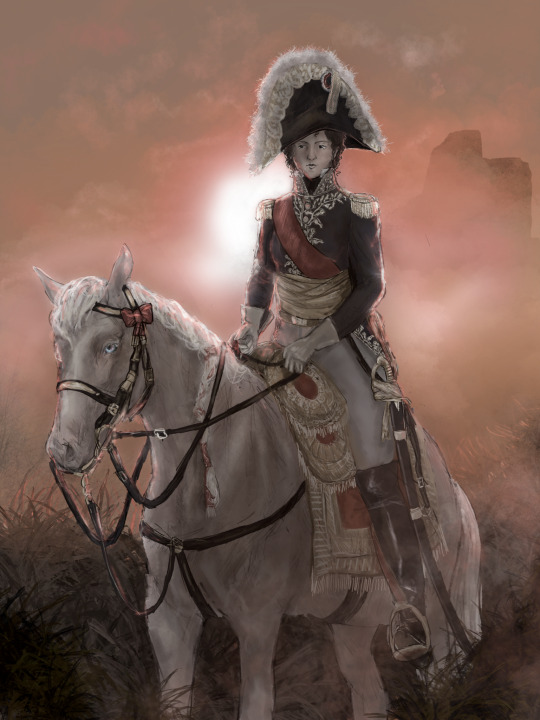
For a very long time I wanted to draw Aglae Ney in a marshal’s uniform.
As a bonus, also Aglae in a "bonnet de police" (this is an element of the uniform that soldiers wore while working at the bivouac).

#history#french history#history art#napoleonic#aglae ney#michel ney#aglae and michel ney#napoleon#napoleon bonaparte#art#artists on tumblr
72 notes
·
View notes
Text

Aglae Ney and the execution wall

#history#french history#history art#napoleonic#aglae ney#michel ney#aglae and michel ney#napoleon#napoleon bonaparte#art
72 notes
·
View notes
Text
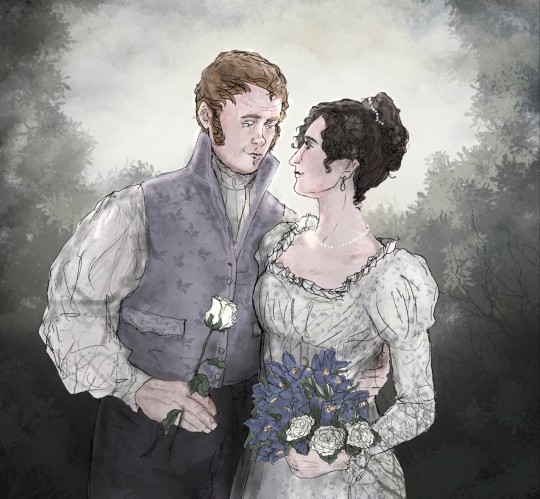
Aujourd'hui c'est l'anniversaire du maréchal Ney
#history#french history#history art#napoleonic#michel ney#aglae ney#aglae and michel ney#napoleon#napoleon bonaparte
82 notes
·
View notes
Text
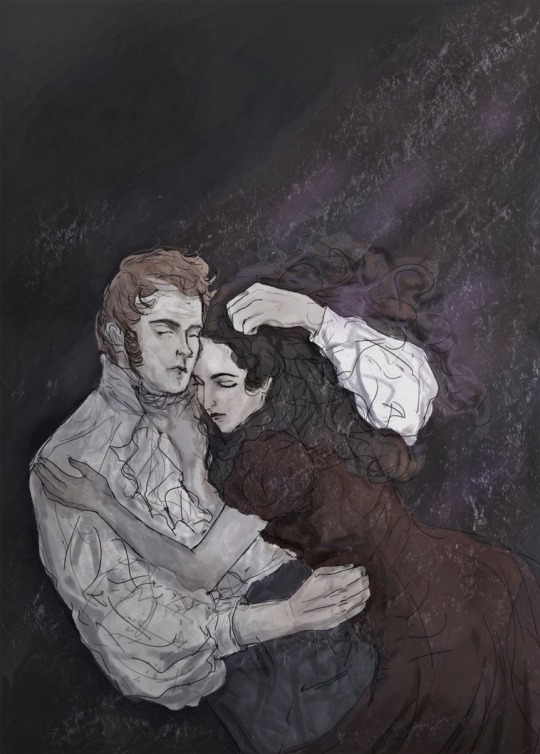
On December 7, 1815, Marshal Ney was executed, depriving Aglae Ney of her husband and their four sons of their father.
#history#french history#history art#napoleonic#napoleon#napoleon bonaparte#michel ney#aglae ney#aglae and michel ney#marshal ney
96 notes
·
View notes
Text
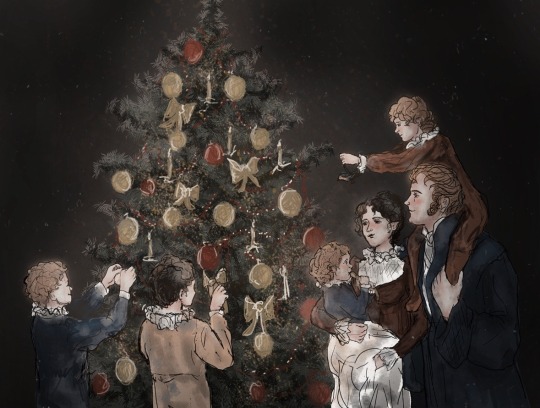
#history#french history#history art#napoleonic#aglae ney#michel ney#aglae and michel ney#napoleon#napoleon bonaparte#merry christmas
66 notes
·
View notes
Text

The anniversary of the execution of Marshal Ney is coming soon. And so here is Aglae Ney and her “ghost”, who is always 46
#history#french history#history art#napoleonic#napoleon bonaparte#aglae and michel ney#aglae ney#michel ney#marshal ney#napoleon
44 notes
·
View notes
Text
I am happy to announce that today a wonderful woman, Aglaé Ney, is celebrating her birthday 💞
And in honor of this, I made a small sketch based on how the five men she adored could congratulate her.


#history#french history#history art#napoleonic#aglae ney#michel ney#aglae and michel ney#marshal ney#napoleon#napoleon bonaparte
88 notes
·
View notes
